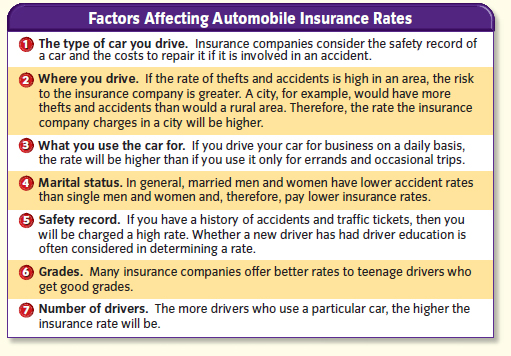Buying and Operating a Vehicle
- Details
- Category: Economics
- Hits: 4,695
As with every decision in life, when you decide to buy a car, you are going to make a trade-off that involves an opportunity cost. You will have to decide what type of vehicle to buy, whether to buy new or used, and whether gas efficiency or engine size is more important to you, for example. In this section, you will learn about some of the important things to consider when shopping for a car.
Buying a Car
Buying a car involves comparing many variables, such as the initial purchase prices, repair histories, warranties, and styles of different makes and models.
Economics & You Have you ever bought or considered buying a car? If so, what factors did you consider? Looks? Safety? Fuel efficiency? Price?
Read on to learn about what to look for when buying a car. Buying a car involves several considerations. One is the amount of money and time spent shopping for the car. Another is the amount of money and time spent in actually purchasing the car. Because of limited resources, most people have to borrow funds to buy a car. The costs of the loan are the down payment, the monthly payments on the principal, and the interest on the loan.
New or Used?
The first decision you must make is whether to buy a new or used car. New cars are more expensive, of course, but they will generally cost less in repairs over the first several years. If you buy a used car, be sure to check out the vehicle’s history first and make sure the car is in good condition. It’s a good idea to have a used car checked over by an independent mechanic before purchasing it.
Registration Fee
The owner of an automobile must pay a state licensing fee, or a registration fee, to use the car. Usually the fee must be paid annually. Some states now offer a two-year registration option. In many states, the amount of the fee varies depending on the car’s age, weight, type, and value.
Extended Warranty
One way to guard against having to pay for major repairs is to buy extended warranty coverage. New-car warranties generally protect owners for all major repairs except tune-ups and damage resulting from improper use of the automobile. New-car warranties usually last only a few years, or up to a certain limit of miles or kilometers. These warranties, however, can often be extended for another one, two, or three years by paying additional money when the car is purchased.
Operating a Car
Operating a car is expensive, involving the costs of gasoline, routine maintenance, major repairs, depreciation, and insurance.
Economics & You Do you own a car? Aside from the initial purchase, how much do you spend every month on the car’s day-to-day use? Read on to learn the costs involved in operating a vehicle.
Normal Maintenance and Major Repairs
The amount of normal maintenance—oil and filter changes and minor tune-ups—depends on the amount the car is driven and how carefully the owner maintains the car. Major repairs are those that are normally unexpected and expensive. They include rebuilding the transmission and replacing the exhaust system.
No one can guarantee that an automobile will not require major repairs while you own it, but you can follow certain steps to reduce the probability.
You should check the repair records of different cars before deciding on a particular make and model. If you are considering a used car, you should also take it to a diagnostic center, or have a mechanic check it. Sometimes dealers offer warranties on used cars for a limited time period, such as 30 days, or you can purchase a warranty covering a longer period of time.

Figure 5.6 How Car Insurance Rates Are Set
When you buy automobile insurance, the rate you are charged is determined by your gender, driving experience, and a range of other factors.
Depreciation
Depreciation —a decline in value over time— takes place as an item wears out or becomes outdated. Age is the major factor. A car loses value every year even if it is not driven because an automobile is a durable good. All durable goods deteriorate, or become worse over time. Another cause of depreciation is the technology and features of new makes and models. These changes make older models obsolete. The amount of depreciation caused by physical wear and tear varies. It depends on how hard a car is driven, how far it is driven, and how well it is maintained. Generally, cars depreciate about 20 percent each year.
Insurance
A major cost of owning an automobile, especially for new drivers, is insurance. Many states require that liability insurance be purchased before an automobile can be licensed.
Liability insurance pays for bodily injury as well as property damage if you are in an accident.
Insurance companies classify drivers in various ways, usually according to age, gender, and marital status. Rates depend on the category into which a person fits. The categories, in turn, are based on statistics showing that different types of drivers have different accident rates. Young people, for example, almost always have to pay higher insurance rates. Figure 5.6 shows factors in addition to age and gender that affect insurance rates. Rates cannot vary too widely, however, because states set limits on the rates that companies can charge. See: Why do males under 25 pay more for car insurance?